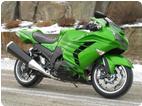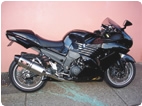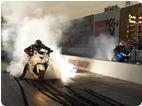I thought I would post an easy, cost effective, way to perform a pressure test on our ZX-14. I looked around for a conventional coolant pressure tester and was surprised at the price they were asking for them. The next problem was that no one seemed to have stock. I decided to make one myself. Here is a photo of the assembled device and a list of the parts involved.
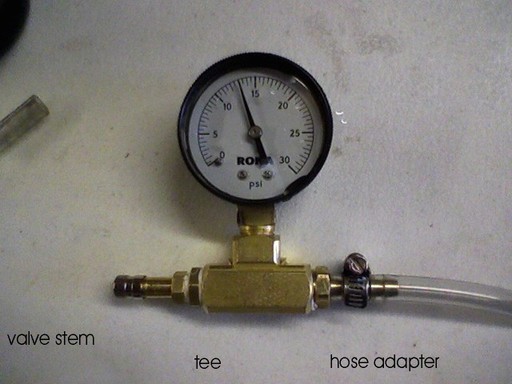
Pressure gauge (0-30 psi range)
Brass Tee
Brass reducer (pipe thread to fine thread of valve stem)
Valve stem
Brass hose connector
Small hose clamp
Length of 1/4 tubing
(you will need brass hose connector and a thread cap to seal the Air Bleed hose)
Remove the "Air Bleed" hose where it connects to the right hand side of the radiator. (The "Air Bleed" hose is a small hose that runs directly from the water pump to the rad and allows air to escape the pump body) Cap the Air Bleed hose off. Connect the tubing from your pressure tester to the radiator where the "Air Bleed" hose was connected. (The "Air Bleed" hose is located between the top reservoir hose and the main rad return hose).
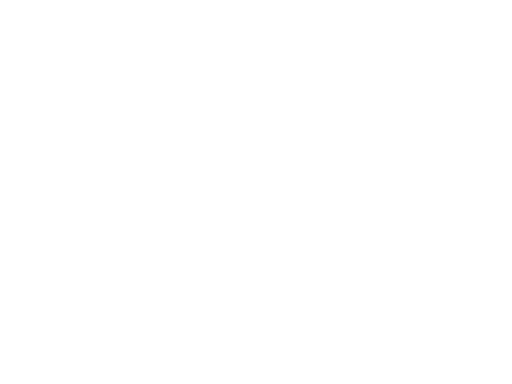
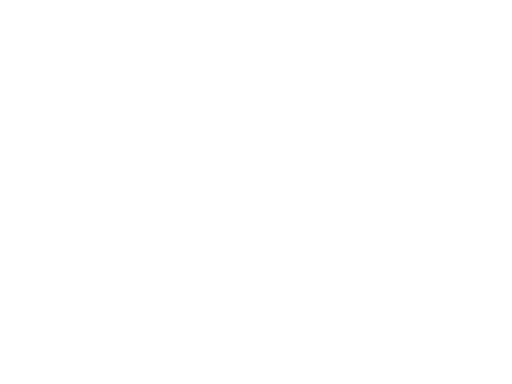
Use a small hand or foot pump (a bicycle pump is ideal). The goal is to slowly introduce pressure into your coolant system up to within 1 to 1 1/2 psi below the pressure rating of your rad cap. Once the desired test pressure has been achieved it should hold firm. The manual suggests a 6 sec test is sufficient. The stock Zx-14 rad cap is rated at 1.1 Bar (15.95 psi). A test pressure of 13 1/2 to 14 psi would be fine. I left my test on for 6 hours. (never exceed 18psi). When finished with the test, simply depress the valve stem and release the pressure, remove the tubing, and reconnect the "Air Bleed" hose back up to the radiator. I would strongly caution against using an air compressor unless you have a very good regulator and have tested and verified the regulated pressure before introducing the air supply to the test. One layman trick that is often used in the field with small compressors is drain down the compressor's tanks completely while the compressor is switched off. Then take advantage of the slow gradual pressure increase experienced as the compress slowly fills the tank and build pressure over a period of time. What ever air supply you decide to use, test it first. The manual bicycle pump is easy and safe. I tested my device by capping off the tubing and applying pressure to the valve stem. This let me leak check my device & verify the gauge accuracy with my digital tire pressure gauge.
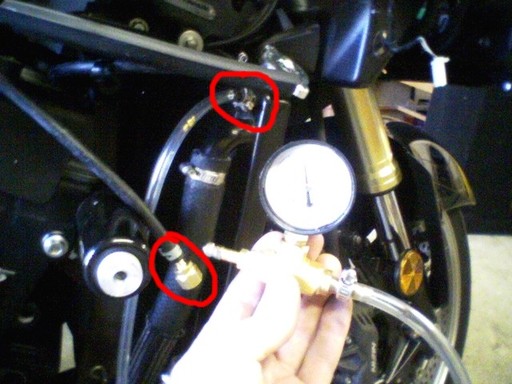
It is just a case of pulling off one hose and capping it, and connecting the tubing of your device.
Thanks for looking, hope this helps.
Spyglass
